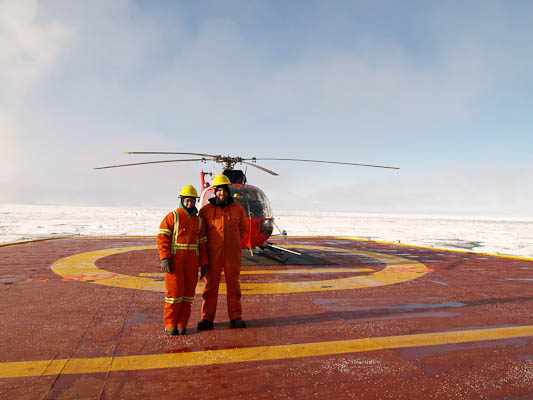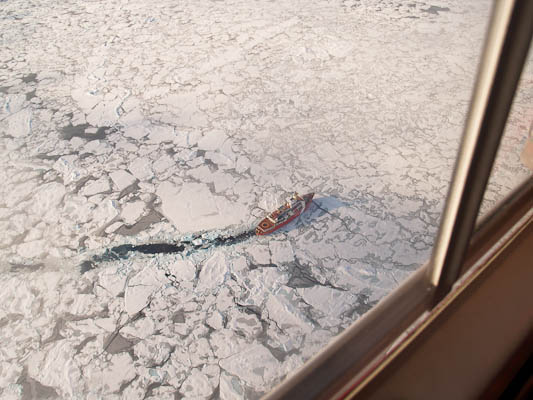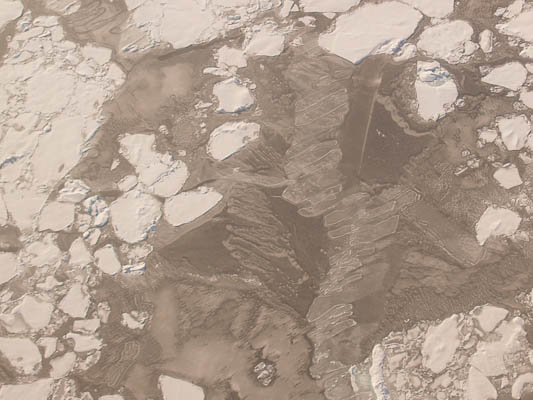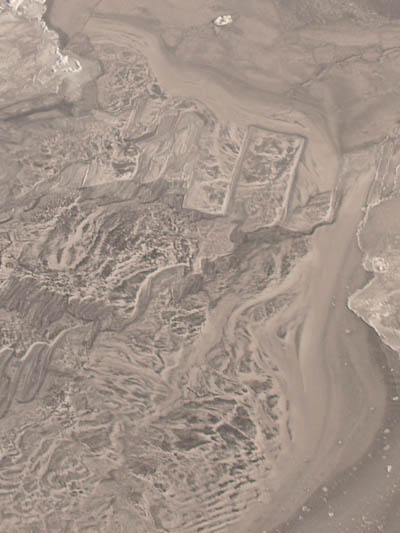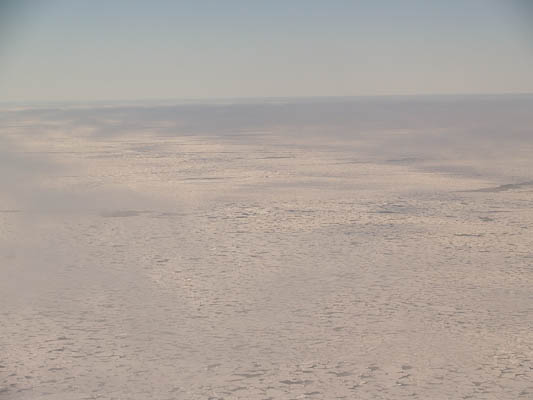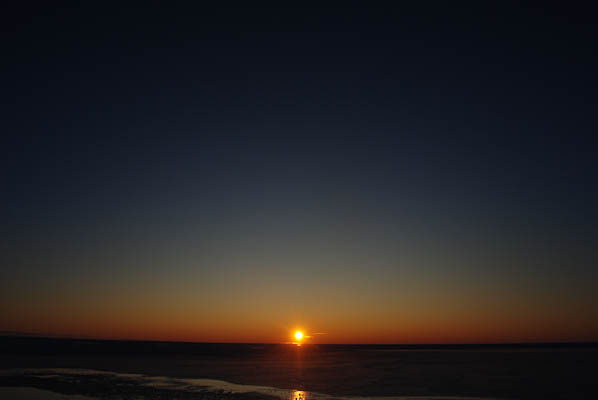Alex KainSeptember 22, 2009
The Louis uses a sophisticated arsenal of tools to navigate ice-covered waters and facilitate scientific research in inhospitable environments. Chief among these tools is its primary source of transportation off the ship, the helicopter. In times when navigation requires first-hand observation of conditions ahead, the helicopter carries scouts to explore the vicinity and determine efficient pathways through the ice. When not being used for ship-related exploration, the helicopter's aerial perspective provides expansive views that help scientists understand the mass movement of Arctic ice. These expeditions go by what is arguably the most action-packed term in environmental science, ice reconnaissance.
Today, helicopter pilot Jim Myra led a group of cadets and scientists on an ice reconnaissance mission. Ice expert Alice Orlich of the University of Alaska-Fairbanks was on board to document the environment and get an idea of how Beaufort Sea ice is behaving in September, when Arctic ice cover reaches its annual low.
All photos property of Alice Orlich unless otherwise indicated. All text property of Alex Kain.
Last updated: October 7, 2019 | 

